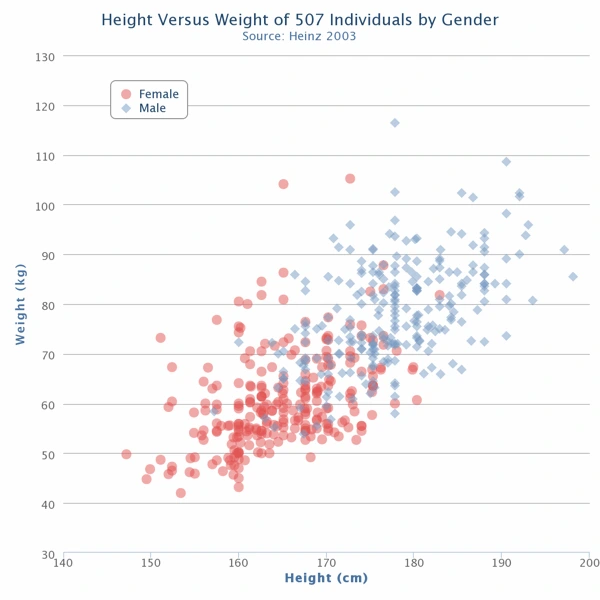Analyzing a business is essential for its success. Transforming unprocessed data into valuable insights is achievable through the use of tools like scatter charts. These charts have proved to be invaluable, offering a transparent vista into data patterns. Next, let’s explore the capabilities and opportunities that scatter charts offer.
Understanding Scatter Charts in Business Analysis

So, what are scatter charts? Scatter charts, also known as scatter plots or scatter diagrams, are graphs that utilize dots to represent values of two different numeric variables. These charts are frequently employed to illustrate the connections between various data types. They act as instruments for visualizing groupings of interconnected data points.
Scatter charts, in the realm of business analysis, function as valuable instruments. They play a pivotal role in revealing and anticipating trends, enabling enterprises to project future results by analyzing historical performance. Business analysts rely on scatter charts to visually represent data aggregation, correlation, distribution patterns, and more.
Benefits of Using Scatter Charts in Business Analysis
Scatter charts have a myriad of benefits. First and foremost, scatter charts serve as a visual simplification of intricate data, promoting clarity and understanding. Their capacity to reveal correlations and data patterns is invaluable, as it empowers businesses to extract meaningful insights from their data, facilitating well-informed decision-making.
Moreover, scatter charts excel in predictive analysis, unveiling hidden trends and patterns that raw data might obscure. Additionally, they possess the ability to efficiently represent large datasets visually, overcoming the challenges posed by other data presentation methods.
Utilizing Scatter Charts for Predictive Analysis

The primary role of scatter charts in business analysis lies in their proficiency in predictive analysis. They excel at identifying patterns and trends within datasets, enabling the prediction of probable future outcomes. This predictive capability is particularly valuable when it comes to forecasting the potential impacts of strategic alterations or decisions.
For instance, scatter charts can shed light on the connection between advertising expenditure and revenue generated. This allows businesses to tune their marketing budgets based on the patterns discerned, optimizing their spending for better results. This analytical methodology empowers businesses to formulate well-informed forecasts, strategize effectively, and allocate resources optimally. Together, these advantages significantly bolster decision-making and streamline business operations.
Real-World Examples of Scatter Chart Use in Business Analysis
Scatter charts are used across various business sectors. In retail, scatter charts can illustrate the relationships between variables like store size and profit, providing insights into how these factors correlate.
Likewise, in the realm of finance, scatter charts prove valuable by illustrating the relationships between various stocks or investment portfolios. This aids investors in gaining a deeper grasp of risk and return dynamics. In the realm of market research, scatter charts come to the forefront, offering valuable insights into the connection between product prices and sales quantities. This knowledge empowers businesses to make more informed decisions regarding their pricing strategies.
These practical instances underscore how scatter charts prove their versatility and wide-ranging utility in numerous industry sectors.
Enhancing Decision-Making Through Scatter Charts
Ultimately, the primary value of scatter charts in business lies in their capacity to enrich data-informed business decisions. These charts, by visualizing potential correlations and exposing patterns, yield invaluable insights that can empower strategic choices.
Whether it’s optimizing advertising investments or deciphering market trends, scatter acharts deliver vital data in an easily digestible format. For any business professional, the ability to analyze and utilize the insights from scatter charts is a priceless skill. It leads to more knowledgeable decisions, enhancing the probability of business success.
While it’s crucial to contemplate the limitations and potential for misinterpretation, scatter charts continue to make significant and extensive contributions to business analysis. In summation, scatter charts stand as formidable tools for business analysis.
Read Also: Backtesting With A Demo Account: Analysing Past Trades For Future Improvements







